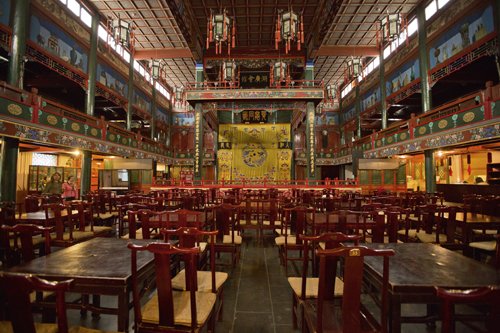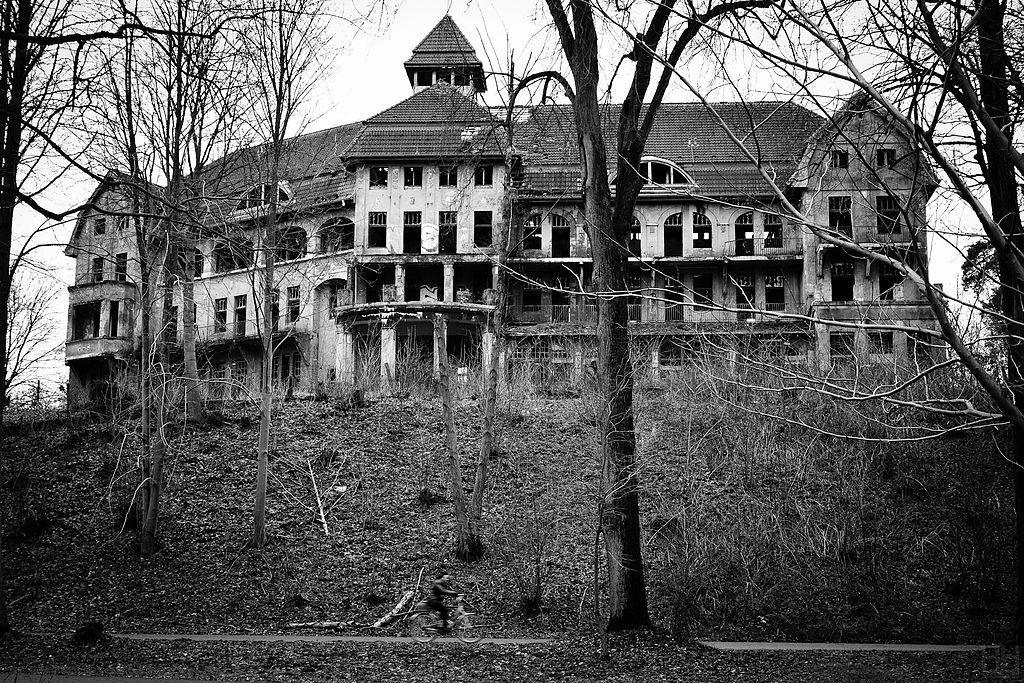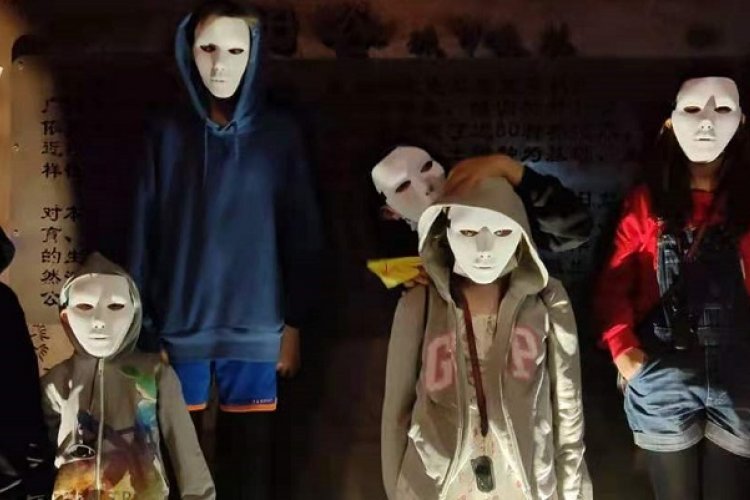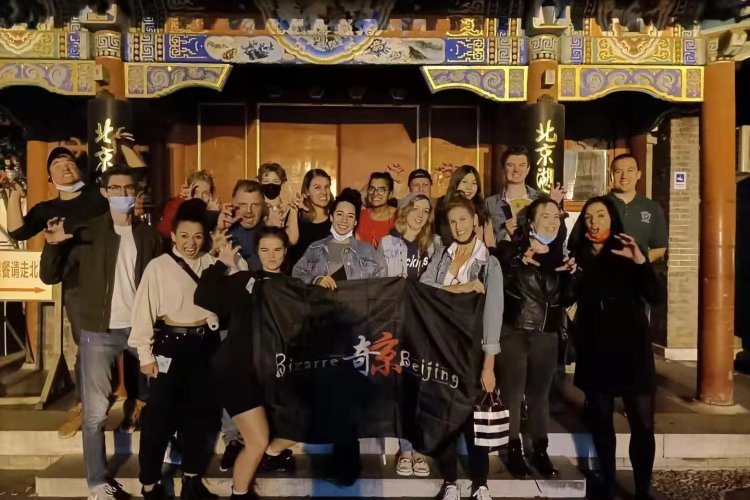Raising Ghosts: Five of Beijing’s Most Haunted Attractions
Watch out folks, it's Halloween. We mark the occasion with a historical deep-dive into some of Beijing's creepiest locations.
As a city with a history of over 3,000 years, Beijing has more than its fair share of ghost stories. Genteel hutong residences and opera houses belie tales of heartbreak, sacrifice, and jilted love. Even now, they are woven into the fabric of the city and continue to reverberate across the ages. Just in time for Halloween, here are the stories of five Beijing landmarks.

Starting our journey in Gulou, the Bell Tower was the backdrop to a ghostly story of filial devotion. During the Ming dynasty, Emperor Yongle ordered a blacksmith called Deng to cast an enormous bronze bell to serve as the city’s official timepiece – the same one that hangs at the top of the tower today. Burdened by this arduous task, Deng and his craftsmen became increasingly desperate as the deadline drew near. After overhearing his worries, his daughter showed up at the workshop by herself one morning. Before anyone could stop her, she threw herself into the furnace.
Though the workers were horrified, her self-sacrifice miraculously provided the boost of heat they needed to fire the furnace and cast the giant bell. On some days, locals say the bell goes xie, xie, xie (“shoe, shoe, shoe”) instead of the clear dong, dong, dong it’s known for. That’s the young girl asking for her shoe back – the only thing a worker was able to grab as she charged into the flames.

Going south, near the western bank of Qianhai Lake, Prince Gong’s Mansion is the next stop on our ghostly trajectory. Though the residence is named after Prince Gong (1833-1898) – the sixth son of the Daoguang Emperor – it was originally built in 1777 for a Qing dynasty official called Heshen (1746-1799), who has a rather unfortunate reputation as the most corrupt official in Chinese history.
There are two supernatural stories involving Heshen. One of them relates to his benefactor, the Qianlong Emperor. When the emperor was still a boy, he startled an imperial concubine by sneaking up on her in her room as she was putting on her makeup. In her shock, she struck him with either her comb or her left fist. This breach of imperial protocol was reported by a lady of the court, resulting in the concubine’s fall from grace and eventual suicide. Wracked by guilt, Qianlong bit his own finger and left a bloody print on her neck so he would recognize her in the next life. Heshen had such a mark and was born in the year of her death, leading the emperor to believe he was the concubine’s reincarnation.
Heshen rose swiftly to fame, thanks in part perhaps to the emperor’s guilt. His corruption was unchecked; his actions, which included repeatedly raising taxes and extending military campaigns to take advantage of additional resources, contributed to the decline of the Qing dynasty.
One of Heshen’s only redeeming features was his devotion to his first wife, Feng Shi. When she became ill after the death of their youngest son in battle, the official summoned monks to the house to pray for her health – but to no avail. She died of a broken heart and is said to haunt Prince Gong Mansion with a retinue of servants. Sometimes, security guards speak of hearing ghostly wails and female apparitions dressed in white wandering the gardens at night. Perhaps that’s why the tourist attraction closes before sundown.

Speaking of grand estates, our next stop is the famous Forbidden City. In 1887, the Guangxu Emperor fell in love with a concubine called Zhenfei. By then, he was estranged from his wife, the Empress Longyu (the niece of the fearsome Empress Dowager Cixi). Zhenfei supported the emperor’s plans for political reforms, further drawing Cixi’s ire.
Two years later, after the failure of Guangxu’s Hundred Days’ Reform, Cixi assumed power. She banished Zhenfei to a corner of the Forbidden City, where she was kept virtually as a prisoner, and forbade her from seeing the emperor. In 1900, the Empress Dowager had Zhenfei killed by ordering eunuchs to drown her in a well before forcing the emperor to flee with her to Xi’an to escape the allied forces attacking Beijing. Zhenfei was 24.
In 1901, when Guangxu and Cixi returned to Beijing, Zhenfei’s family was finally allowed to retrieve the concubine’s body from the well. The latter is located in the northeastern corner of the Forbidden City and today bears a bilingual inscription recounting Zhenfei’s tragic tale.

Continuing south all the way past Chang’an Jie into Xicheng District, we reach a stately Beijing opera house called Huguang Guild Hall. One of the “four great theaters” of Beijing, Huguang was built in 1807 and was later used as a home for the poor during World War II. In a Stephen King-like twist, the theater was constructed over an ancient graveyard and is said to have roused many angry spirits in the process. Locals report still hearing screaming from the courtyard; if you throw a stone into it, a scolding voice will sometimes tell you to cut it out!

Last but not least is the famous haunted house at 81 Chaoyangmen Neidajie (known as Chaonei 81), a Beijing building that is so infamous it even bagged itself a New York Times profile as well as a feature film (more on that later). The article reports the legend of a Kuomintang official who abandoned his wife (or concubine, depending on the source) after the Nationalists’ defeat in 1949. In her grief, she hung herself from the rafters of their three-story house.
The historical building, built in the French Baroque style is owned by the Beijing Catholic Diocese, which refutes the idea that a KMT official ever lived in the house. The history of Chaonei 81 prior to 1949 is difficult to establish due to missing or inconsistent records; the archdiocese says it was likely opened in 1910 as a Chinese school for missionaries while some historians believe it was the residence of the French manager of the Beijing-Hankou Railway.
The official story certainly didn’t convince the throngs of up to 500 daily thrill seekers who flocked to Chaonei 81 after the release of the 2014 Hong Kong horror film The House that Never Dies, whose plot is loosely based on the legend of the KMT official. Soon after, Chaonei 81, the archdiocese restricted access to the house over concerns that the increased foot traffic would damage its structural integrity.
Sadly, visitors are no longer able to visit the legendary haunted house at all, that is, unless they have the cash to rent it out. After fascinating visitors and locals alike for years, the building was finally renovated in March 2016, underwent an exorcism, is currently being rented out, for an estimated RMB 10 million per year. Now that's enough to put the fright into anyone.
Want to check the sites out yourself?
Drum and Bell Towers
Daily 9am-5pm. RMB 30. 9 Linzi (near Zhuyuan Hotel), Zhonglouwan Hutong, Dongcheng District
钟鼓楼,东城区钟楼湾胡同临字9号(竹园宾馆附近)
Prince Gong’s Mansion
Daily 7.30am-4.30pm. RMB 20, RMB 60 (with guide). 17 Qianhai Xijie, Xicheng District (8328 8149)
恭王府,西城区前海西街17号
Forbidden City
Daily 8.30am-4pm (summer), 8.30am-3.30pm (winter). RMB 60 (Apr 1-Oct 31), RMB 40. North of Tian’anmen Square, Dongcheng District (8500 7114)
故宫,东城区天安门广场北侧
Huguang Guild Hall
RMB 10, RMB 5 (students). Mon-Fri 9-11am, 1.30-5pm (opera performance 7.30-8.40pm). 3 Hufang Lu, Xuanwu District (6351 8284, 6352 9134) www.beijinghuguang.com
湖广会馆,宣武区虎坊路3号
Chaonei 81
81 Chaoyangmen Neidajie, Dongcheng District
东城区朝阳门内大街81号
This article originally appeared in our sister publication beijingkids.
Got the creeps? Check out the full list of Beijing's spooky Halloween parties and events, right here.
Photos: Uni You, Tormod Sandtory, Wikimedia Commons







